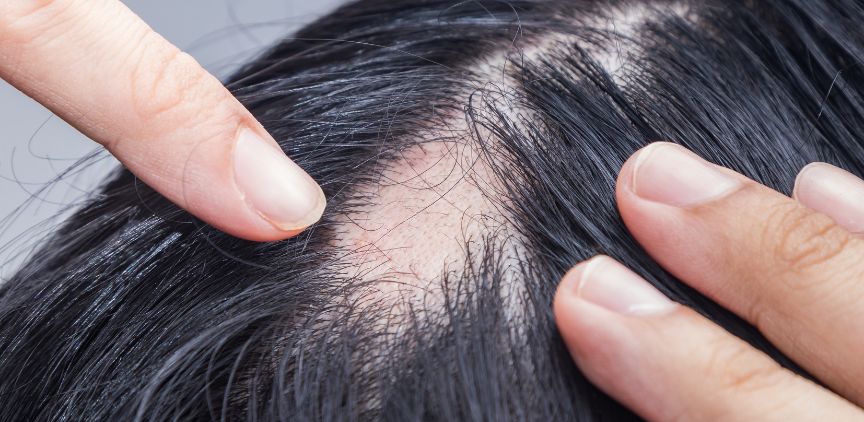Prevent and Protect
Alright, picture this: your hairline, home to those delicate, wispy baby hairs that practically defy gravity. But guess what? It's also the battleground for some of the most intense styling wars waged by women. We're talking gel slicks, braids pulled tight, flat irons on a mission and brushes working overtime. It's like a styling marathon, but here's the catch—this heavy-duty styling can throw your hairline into the danger zone known as traction alopecia.
Traction Alopecia Subtle Signs
Traction alopecia likes to play the long game, so catching it in action might take a minute. Pay special attention to the frontline, especially near your ears; if it's feeling a bit sparse, that's your cue to raise an eyebrow. It could even manifest as tiny bumps on your scalp resembling pimples.
Other symptoms you may notice include:
- Soreness or stinging of the scalp.
- Itching.
- Scaling.
- Folliculitis.
- Pus-filled blisters on the scalp.
Keep Traction Alopecia from Getting Worse
First things first, give those damaging styling habits a break. Braids with extensions shouldn't stay in for more than five or six weeks. Once you take them out, thoroughly clean your scalp and ease up on any extra stress caused by heavy extensions or accessories that might rub against your hairline.
Some Steps to Handle Traction Alopecia
Here are ways to help you manage traction alopecia as soon as you notice it:
- Opt for loose hairstyles whenever possible: For individuals whose religion or profession mandates tight hairstyles, it's crucial to tie the hair as loosely as possible and let it flow freely whenever feasible.
- Steer clear of or limit the use of chemicals, particularly relaxers: Refrain from applying relaxers to hair that's already been treated. To avoid putting excessive strain on one area of the scalp, consider changing hairstyles every few weeks.
- Experiment with hair growth products: About 40 percent of individuals using minoxidil products experience some hair regrowth within 3 to 6 months. While the FDA has given the green light to Rogaine, individuals should refrain from using it if their scalp is red or inflamed.
- Incorporate anti-inflammatories into your routine: Steroid creams can be effective in reducing swelling on the scalp caused by traction alopecia.
Preventing Traction Alopecia Before It Strikes
Now, traction alopecia is a sneaky type of hair loss that creeps in when your hair follicles are under prolonged stress. And guess where it loves to set up camp? Right at the front of your hairline. Stats say about one-third of African-American women have danced with traction alopecia, thanks to styles like tight braids, hot extensions, hairline-scorching heat, chemical relaxers, weaves and even those pesky sponge rollers.
But hold on, it's not just a black hair thing—other folks have joined the party too. Pulling your hair into tight updos, rockin' ponytails like it's a lifestyle or sticking with the same headband every day? Yup, that's traction alopecia RSVP-ing to your hairline party.
Now, here's the plot twist. Even if you swear by a styling routine that's gentle as a breeze, you might still be jeopardizing those baby hairs. The secret sauce to avoiding traction alopecia? Break the cycle. It's like a spa day for your hair—give it a break from those tight styles and harsh habits.
The Scary Part You Should Know
So, here's the deal – ignore traction alopecia, and it might stick around for good. Your hair follicles, the MVPs of hair growth, getting so beat up that they throw in the towel. No more regrowth, no more luscious locks.
The longer you let traction alopecia do its thing without any TLC, the higher the chance it'll become a permanent member of your hair journey. Time to show your hair some love before it decides to take a permanent vacation!
Read on to learn about some of the early warning signs of a heart attack.
